10 Amazing Benefits: ‘What is PEVA Shower Curtain’ Revealed!
When it comes to choosing a shower curtain, the material matters. You want something that is waterproof, easy to clean, and most importantly, safe for your health. The PEVA shower curtain is a popular choice among homeowners. But what is PEVA shower curtain, and is it the best material for your shower curtain?
Table of Contents
What Is PEVA Shower Curtain
PEVA is short for polyethylene vinyl acetate, is a type of plastic that is commonly used in shower curtains.
PEVA is a non-chlorinated vinyl and a popular alternative to PVC(Polyvinyl Chloride),Which is known for releasing harmful chemicals, including VOCs(Volatile Organic Compounds)
PEVA is much more durable compared to other materials commonly used in the bathroom, such as fabric, nylon, and polyester. As it’s waterproof too, there’s less need for a liner.
In addition, PEVA shower curtains are easy to clean and resistant to both mildew and mold making them ideal for family bathrooms.
What Does Peva Feel Like
PEVA shower curtains are soft and bendable, unlike their PVC counterparts, which are typically hard and stiff. These curtains have a smooth feel to them, striking a good balance between durability and softness.
Depending on the make and design, some PEVA materials have a fabric-like feel which has earned it comparisons to weaved material such as high-density cotton or linen.
Is Peva Waterproof
Yes, PEVA is still the best fabric when it comes to being waterproof. They are designed to prevent water from splashing out of the shower or tub, making them an efficient choice for a shower curtain or liner.
It can handle moisture better than other fabric, because it’s made of strong polymers.
Even after being washed many times, it doesn’t get damaged by water or other liquids.
Furthermore, unlike certain fabrics such as nylon cloths or cotton blends, peva doesn’t absorb any moisture which allows less dirt residue build up in showers making them easier to clean off.
Is PEVA In A Shower Curtain Good Or Bad
There are several benefits to using PEVA shower curtains. They do not emit VOCs and other harmful chemicals, making them a healthier choice. Additionally, being waterproof and easy to clean, PEVA curtains offer practical benefits as well.
It is a popular choice for shower curtain.
But there may be some hidden dangers of which you’re unaware.
PEVA is still a type of plastic. Although it is a safer alternative, it may not be as eco-friendly as some other materials like organic cotton or hemp.
In comparison, fabric shower curtains might be safer than both PEVA and PVC since they are typically made from natural fibers like linen or cotton – however their ability to keep out moisture depends on what type of lining or backing was used in their construction.
Is PEVA A Fabric Or Plastic
PEVA is a type of plastic, not fabric. It is a vinyl that has been made without chlorine, which makes it less harmful than traditional vinyl or PVC.
When comparing PEVA shower curtains with those made from other materials like Vinyl/PVC shower curtains, we should look at the difference: Vinyl/PVC are more durable than PEVA curtains because they thicker, which makes it less likely that sharp pet claws will tear them.
Is PEVA Shower Curtains Mold And Mildew Resistant
Yes, PEVA shower curtains are mold and mildew resistant due to its proprietary woven construction. The material is made of polyethylene vinyl acetate (PEVA), a chlorine-free plastic that provides some protection from water droplets entering through the fabric, keeping the bathroom dry and clean.
Not only does it keep mold and mildew from growing in the bathroom, which could be dangerous, but it also lasts longer and is easier to clean, making it easier to keep up.
It has an extra vapour barrier to stop moisture from getting into surfaces like tiles or walls. It is also thicker, which makes it less likely to get wrinkles when hung in the shower.

Is Peva Good Or Bad
The debate of whether or not PEVA is good or bad for use in shower curtains is a complicated one. While it certainly has eco-friendly, safe and durable qualities that make it attractive to many, there are also notable cons associated with the material.
PEVA is touted as an improved alternative to PVC (polyvinyl chloride) due to its chlorine-free makeup – meaning it does not produce hazardous off gasses like normal vinyl curtain liners.
It can also be more cost effective than some other materials and retain its shape better due to being water resistant – this means no sagging when wet! That being said, while PEVA may have the potential of reducing environmental impact if handled properly through disposal protocols, it still has issues such as potentially releasing chemical VOCs into air if certain products are used incorrectly (such as at high temperatures).
Those with sensitive skin may experience irritation from contact since the material contains plastic resins that can cause allergic reactions. The odor and chemicals released by PEVA film processing methods used in manufacturing may also pose health risks over time if frequently exposed.
In conclusion, while adopting a PEVA shower curtain instead of regular PVC could help reduce energy consumption levels during both production stages and post usage life cycles, serious health concerns must be considered before deciding on which type of product best fits your bathing needs and desires.
Is PEVA Safe?
Yes, PEVA is generally safe for use. It doesn’t contain harmful chemicals like VOCs and phthalates, making it a safer choice than many plastic alternatives.
PEVA, or polyethylene vinyl acetate, is an alternative to PVC or plastic shower curtains and is often seen as a safer alternative for use in homes. PEVA does not contain chlorine and has no off-gassing making it suitable for use in showers without causing harm to humans.
Even though PEVA is less toxic than other types of plastics, studies have proven that it can still be harmful when exposed to living organisms such as plants, fish, and animals.
A study by the University of Washington showed that when this type of curtain subjected marine life to constant exposure over extended periods of time potentially more hazardous chemicals are released from the fabric known as VOC’s (volatile organic compounds).
Similarly heat treatments applied during manufacture may also cause contamination with emissions such as heavy metals like lead which is harmful to people’s health. It was also demonstrated by this research that substances volatizing into the air were observed at higher concentrations inside bathrooms with PEVA shower curtains than those without; emphasizing potential risks associated with its use indoors.
As we’ve already said, PEVA doesn’t contain chloride, which means it won’t corrode in water or grow mold because it’s resistant to chlorine. However, health professionals recommend choosing eco-friendly alternatives if possible, since chlorinated plastic gives off benzal chloride, a dangerous gas linked to cancer that can be inhaled, makes it hard to breathe, and irritates the skin.
Is PEVA Safe For Babies?
PEVA is a safer choice for babies as it does not release harmful chemicals that can be inhaled or come in contact with the skin. However, as with any product, it’s important to ensure that babies and young children do not chew on the shower curtain.
PEVA is a PVC-free alternative and non-toxic material This makes PEVA relatively safe for babies, since it does not contain any of the chemical allergens or VOCs (volatile organic compounds) found in other plastic materials like PVC.
Thanks to its chlorine-free composition, PEVA can also be used around smaller children without fear of exposing them to toxins or harmful allergens. Further safety features include its waterproof properties which prevent bacteria from developing on the fabric, while also preventing water seepage into walls and causing damage over time because bacteria will not grow within the curtain’s surface area.
Additionally, PEVA fabric has been proven to resist mould and mildew better than other fabrics like polyester or cotton when wet conditions persist in bathrooms.
What Material Is Best For A Shower Curtain
When it comes to choosing the best shower curtain material for your bathroom, it’s essential to compare the various options available. Here’s a table outlining the differences between PEVA, PVC, fabric, and vinyl shower curtains to help you make an informed decision.
| Type | Durability | Water Resistance | Environmental Impact | Cost-Effectiveness | |
| PEVA | More durable than PVC and fabric options. | Waterproof and water-repellent, making it a great choice for shower curtain liners. | Chlorine-free and recyclable, making it a more eco-friendly choice than PVC. | Generally cheaper than other materials, offering good value for money. | |
| PVC | Can be less durable than PEVA, as it may crack or tear over time. | Waterproof, but may have a strong plastic smell and generate harmful fumes. | Not eco-friendly due to the use of chlorine in production and difficulty in recycling. | May be cheaper upfront, but not cost-effective in the long run due to lack of durability and potential health risks. | |
| Fabric | Varies depending on the specific fabric used, but generally less durable than PEVA. | Not waterproof but can be water-resistant with treatment. A liner is often required. | Can be eco-friendly if made from natural or recycled materials, but may require more resources to clean and maintain. | Can be more expensive than PEVA and PVC options, but may offer greater design variety and a softer feel. | |
| Vinyl | Similar durability to PEVA, but may have a stronger plastic smell. | Waterproof, but can emit harmful fumes and chemicals if not made of EVA vinyl. | Not as eco-friendly as PEVA, but better than PVC. EVA vinyl is a safer choice. | Similar cost to PEVA, but with potential health risks if not made of EVA vinyl. | |
As seen in the table above, PEVA shower curtains offer a great balance of durability, water resistance, environmental impact, and cost-effectiveness. With a SMART by Simple Memory Art EVA vinyl periodic table shower curtain or an InterDesign water-repellent and odorless PEVA liner, you can enjoy the benefits of this eco-friendly material in your bathroom.
Peva Vs Pvc Shower Curtain
These Two popular materials – PEVA and PVC – are common choices for shower curtains, but there are key differences to consider when making your decision.
| PEVA Shower Curtain | PVC Shower Curtain |
| Eco-friendly alternative to PVC | Traditional shower curtain material |
| Non-chlorinated vinyl | Chlorinated vinyl |
| Does not contain toxic dioxins | May release toxic dioxins |
| Safe for people with allergies or chemical sensitivities | Can cause irritation for some individuals |
| Waterproof and mildew resistant | Waterproof and mildew resistant |
| Easy to clean, can be wiped down or machine washed | Easy to clean, generally wiped down with a damp cloth |
| Durable, but may not be as long-lasting as PVC | Extremely durable and long-lasting |
| Lower environmental impact | Higher environmental impact due to dioxin production |
In summary, both PEVA and PVC shower curtains offer durability, waterproof qualities, and mildew resistance. However, PEVA shower curtains are a more eco-friendly and health-conscious choice due to their non-chlorinated material and lack of toxic dioxins. PVC shower curtains, while long-lasting, have a higher environmental impact and can cause irritation for some individuals. Ultimately, choose the material that best suits your needs and preferences while considering the impact on your health and the environment.
Peva VS Fabric Shower Curtain
When it comes to choosing between a PEVA and fabric shower curtain, it’s essential to consider various factors like durability, water resistance, and environmental impact to make the right decision for your home. The following table provides a comparison of PEVA and fabric shower curtains to help home décor lovers make an informed choice:
| Criteria | PEVA Shower Curtain | Fabric Shower Curtain |
|---|---|---|
| Durability | PEVA curtains last long but can wear over time. | Fabric curtains, especially polyester ones, are durable and last longer. |
| Water Resistance | PEVA curtains are waterproof, helping to keep the bathroom dry. | Fabric curtains might need an extra liner to be water-resistant. Some may lose their water-resistant coating over time. |
| Environmental Impact | PEVA is eco-friendlier than PVC, but still a pollutant when disposed of. | Polyester fabric curtains are more eco-friendly than plastic ones, especially those made from recycled or sustainable materials. |
| Maintenance | PEVA curtains can be wiped clean easily but are usually not machine-washable. | Fabric curtains are typically machine-washable but may need more frequent washing than PEVA curtains. |
| Price | PEVA curtains are cheaper, making them a good budget choice. | Fabric curtains are usually pricier, but they provide a luxurious feel and look. |
In conclusion, PEVA and fabric shower curtains both have their advantages and disadvantages. PEVA curtains offer water resistance and affordability, while fabric curtains provide durability and a more eco-friendly option.
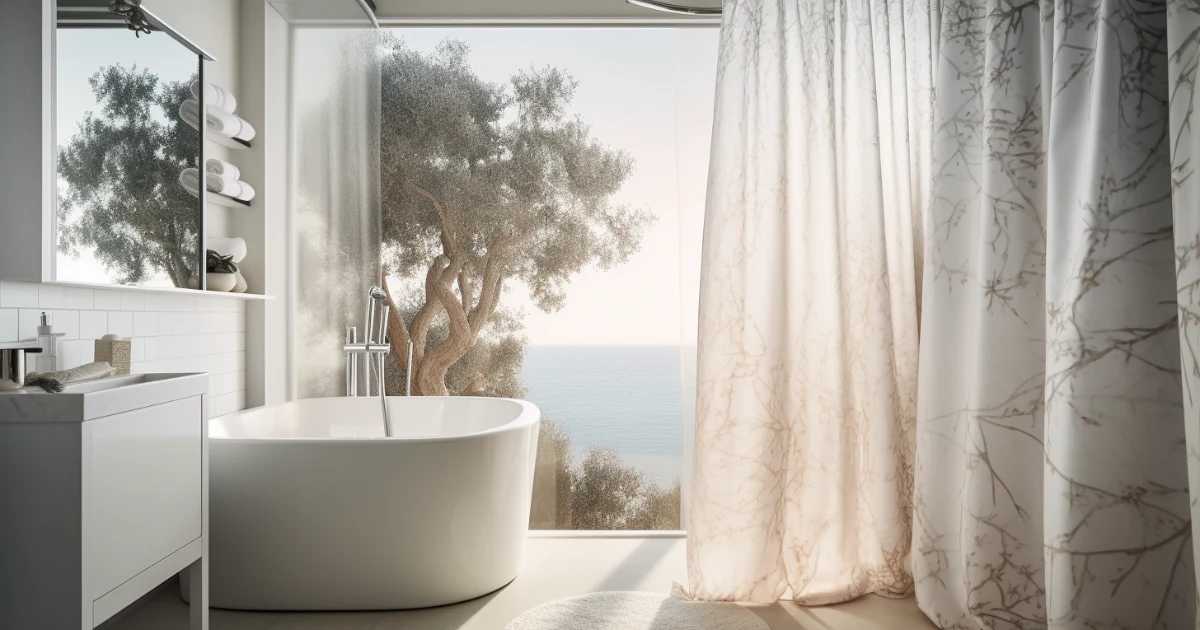
Peva Vs Polyester Shower Curtain
| Feature | Peva | Polyester |
| Eco-Friendly | Yes (No PVC) | No (synthetic fibers) |
| Durability | Moderate | High |
| Water Resistance | High | Moderate |
| UV Protection | No | Yes |
| Maintenance | Moderate (flexible, but shorter lifespan) | Easy (machine washable, dust repellent) |
| Price | Generally cheaper | Can be pricier |
| Ideal Environment | Any bathroom | Bathrooms with direct sunlight |
PEVA (Polyethylene Vinyl Acetate) shower curtains are an environmentally-friendly choice, as they are free from PVC (polyvinyl chloride), which is a harmful substance. They are able to handle damp and humid conditions well, keeping their flexibility over time. However, they might not last as long as some other materials like nylon or particularly polyester.
Polyester shower curtains, on the other hand, are produced by melting synthetic fibers and fusing them together with high heat. This method increases their durability but might also add to their cost. Though they may not be as water-resistant as PEVA curtains, they provide UV protection. This makes them suitable for bathrooms with windows that let in direct sunlight. They also resist dust, contributing to cleaner air in your bathroom. Polyester curtains are easy to clean, either by hand or in a washing machine, depending on how stained they are.
If you’re seeking a long-lasting and eco-friendly option, PEVA with a low chlorine content could be your go-to. For a blend of durability and functionality, polyester could be the right choice. Both materials come with their own set of advantages and disadvantages, so you should consider your specific bathroom conditions and needs before making a choice.
Conclusion
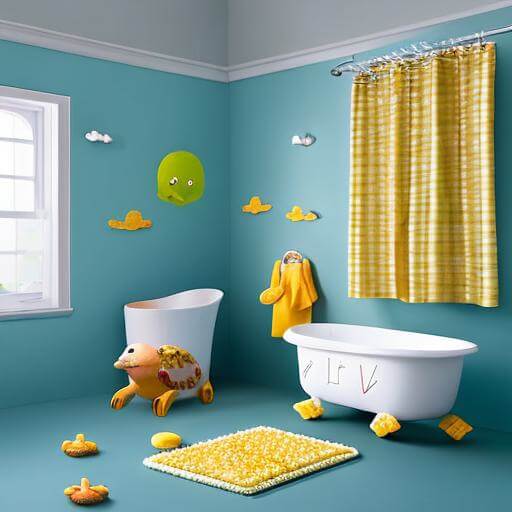
A PEVA shower curtain is an environmentally friendly and safe choice. It is a PVC-free alternative, waterproof, recyclable, and chlorine-free. Using a PEVA or other plastic shower curtain can be beneficial for quick cleanup of water splashes on bathroom floors, as well as providing a cheaper but equally effective alternative to vinyl curtains or fabric ones.
However, if you are looking for something more luxurious and decorative in your home there are also some great options with fabric curtains that will not only make your bathroom look modern but will last much longer than a PEVA shower curtain liner.
FAQ

Q: What is a PEVA shower curtain?
A: A PEVA shower curtain is a type of non-toxic and eco-friendly shower liner that is often used as an alternative to vinyl or PVC shower curtains. PEVA stands for polyethylene vinyl acetate and is a plastic material that is often used in household products such as shower curtains and tablecloths.
Q: What is the difference between a shower curtain liner and a fabric shower curtain liner?
A: A shower curtain liner is typically a thin, waterproof material designed to keep water off your bathroom floor while a fabric shower curtain liner is made from a heavier, more durable material that can be washed and reused. Fabric shower curtain liners are a popular option because they are less likely to develop mold and bacteria and are safer for the environment.
Q: Are vinyl shower curtain liners toxic?
A: Vinyl shower curtain liners are often made with PVC and other harmful chemicals that have been linked to developmental problems, headaches, and other health concerns. To be on the safe side, it is recommended to use a fabric shower curtain liner or a non-toxic alternative like PEVA or EVA.
Q: What are PEVA products?
A: PEVA products are household items made from polyethylene vinyl acetate, a plastic material that is often used as a non-toxic and eco-friendly alternative to vinyl and PVC. Shower curtains, tablecloths, and other household products may be made from PEVA instead of traditional plastics.
Q: Is PEVA or EVA better for a shower curtain liner?
A: Both PEVA and EVA are non-toxic alternatives to vinyl and PVC and are safe for use as shower curtain liners. However, PEVA is more commonly used and may be easier to find in stores and online.
Q: How often should I replace my shower liner?
A: It is recommended to replace your shower liner every six months to a year to keep your bathroom clean and free of bacteria and mold. However, if you notice discoloration or a buildup of mildew, you should replace it sooner.
Q: Can PEVA or EVA liners be washed in a washing machine?
A: No, it is not recommended to machine wash PEVA or EVA liners as they may become damaged in the wash. Instead, wipe them down with a damp cloth or wash them by hand in the bathtub using a mild cleaning solution.
Q: What are some other non-toxic and eco-friendly shower liner options?
A: In addition to PEVA and EVA, you could consider using a hemp or bamboo shower curtain liner, which are both biodegradable and have antimicrobial properties to help keep your bathroom clean and free of bacteria and mold.
Q: Can a shower liner be used in a standing tub?
A: Yes, a shower liner can be used in a standing tub to help prevent water from splashing onto the floor. However, you may need a longer or wider liner to fit the dimensions of your tub.
Q: Are fabric shower curtain liners easy to wash?
A: Yes, fabric shower curtain liners can be washed in a washing machine with a mild detergent and then hung to dry. This makes them an easy and convenient option for those who prefer a reusable and eco-friendly shower liner.
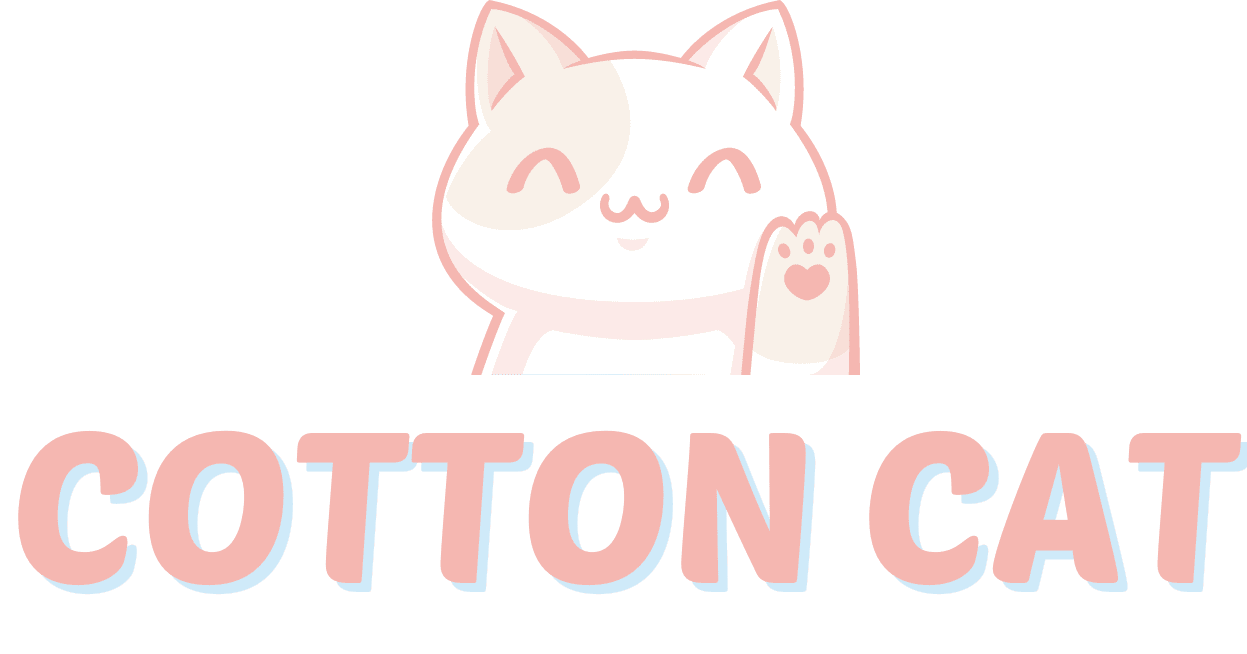
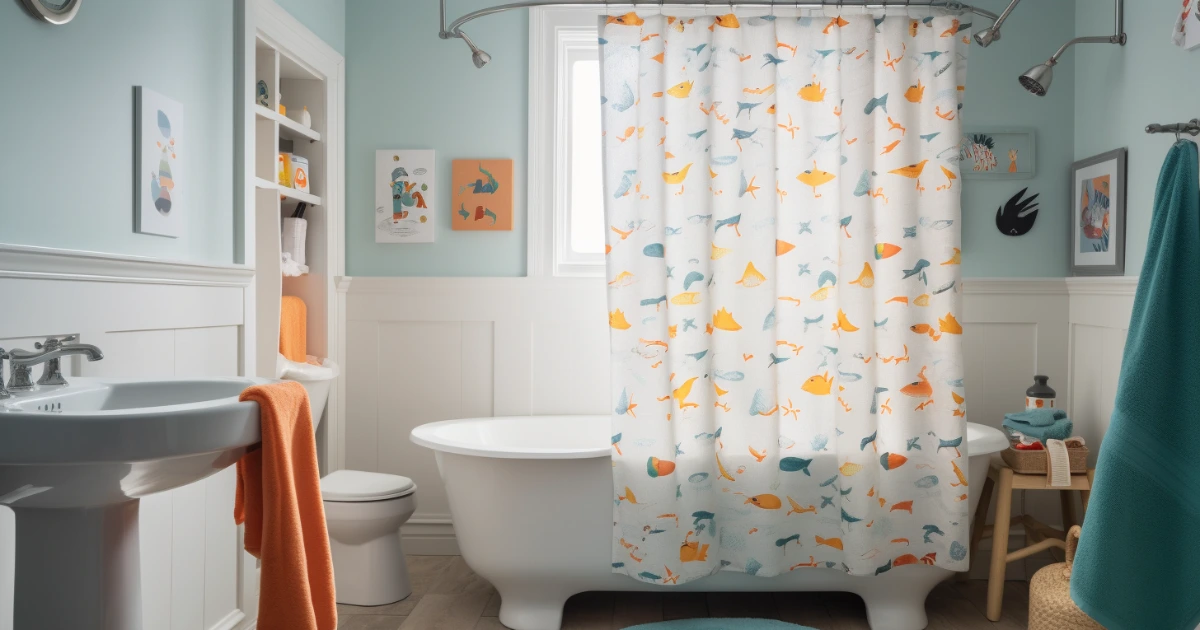
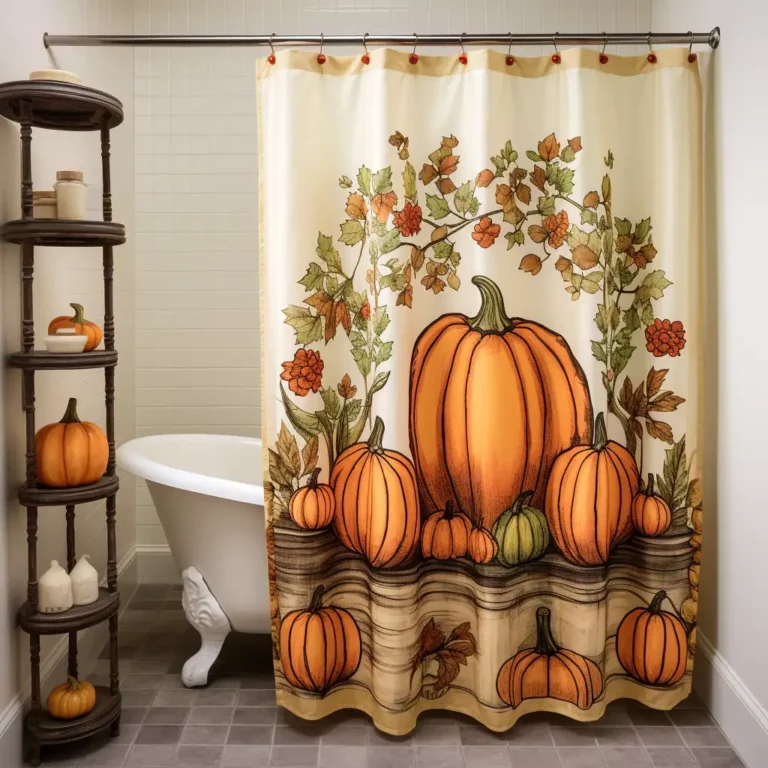
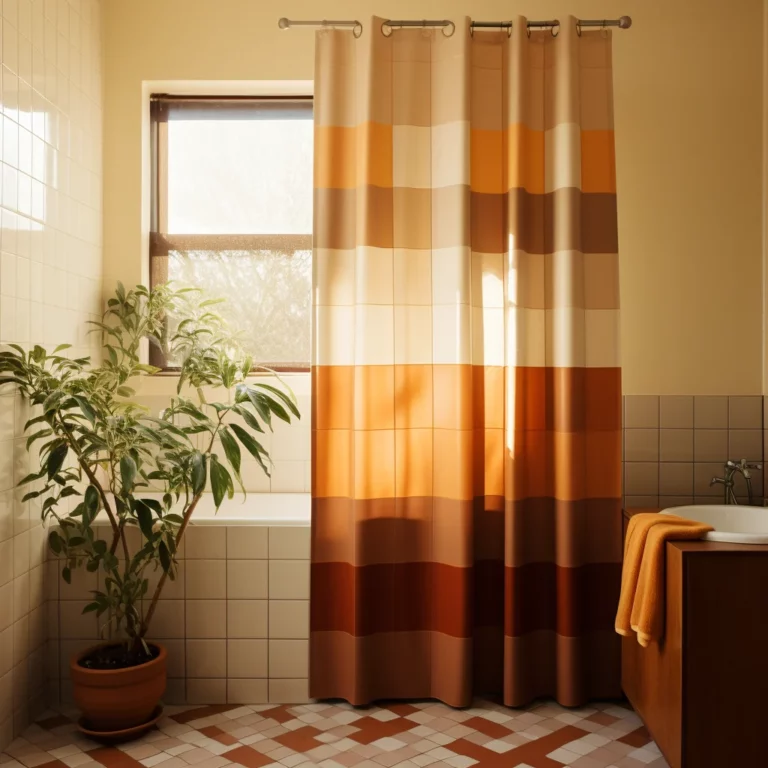
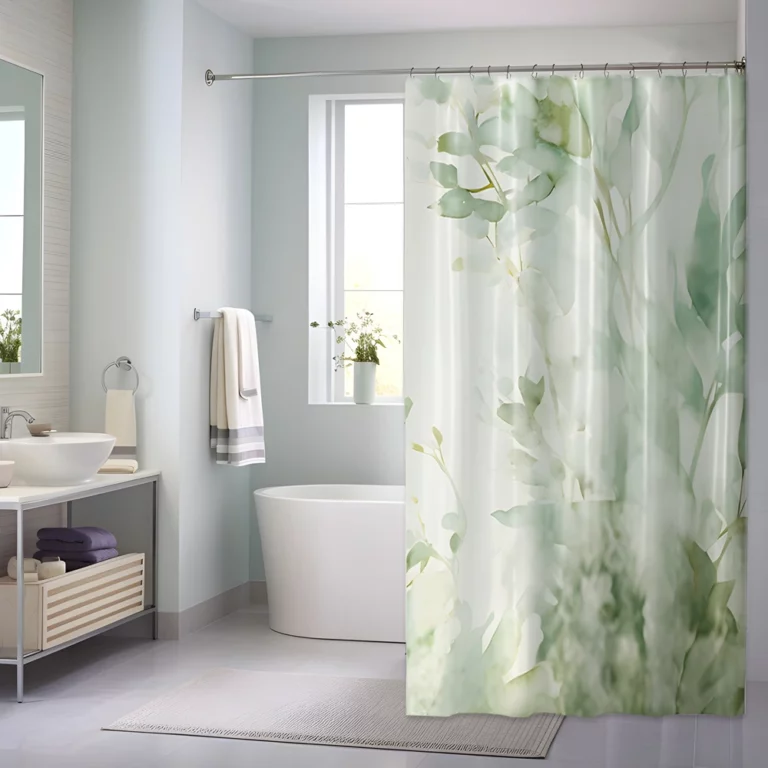
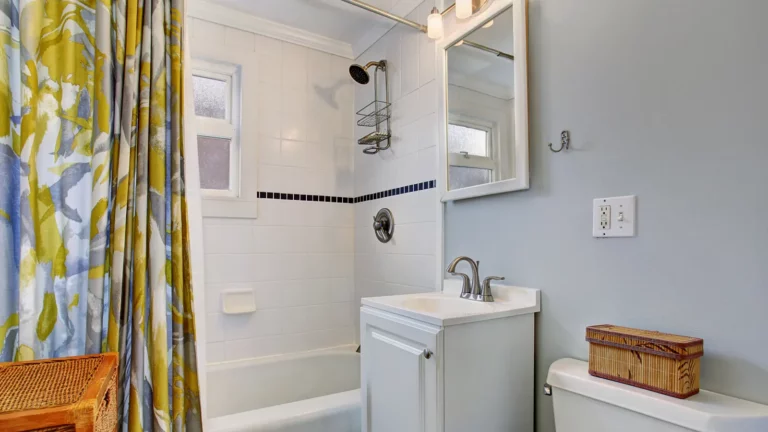
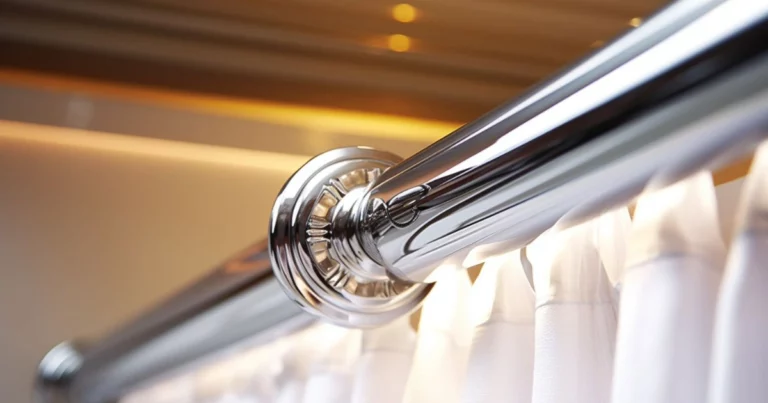

Can you be more specific about the content of your article? After reading it, I still have some doubts. Hope you can help me.
What specific questions do you have after reading the article?